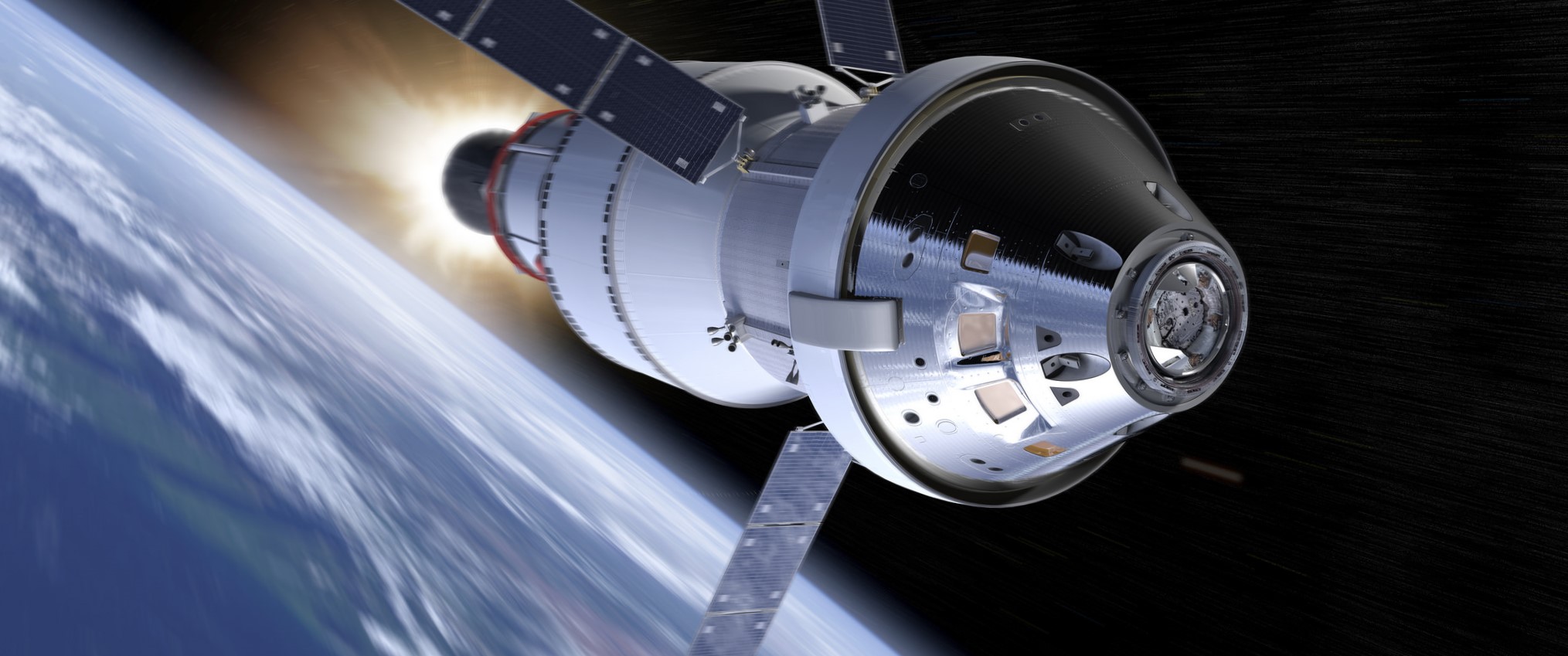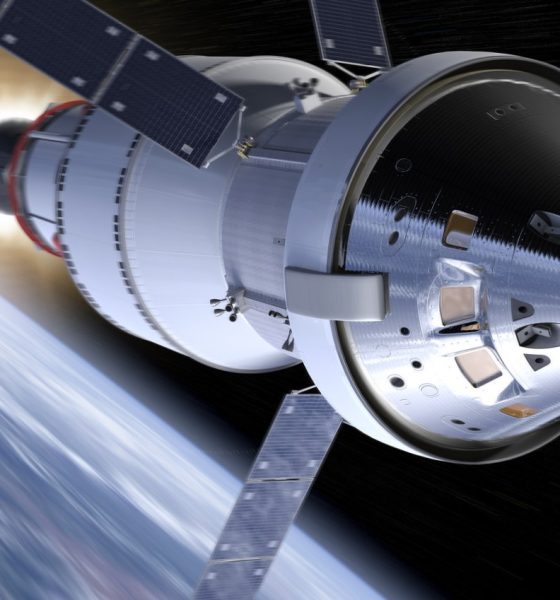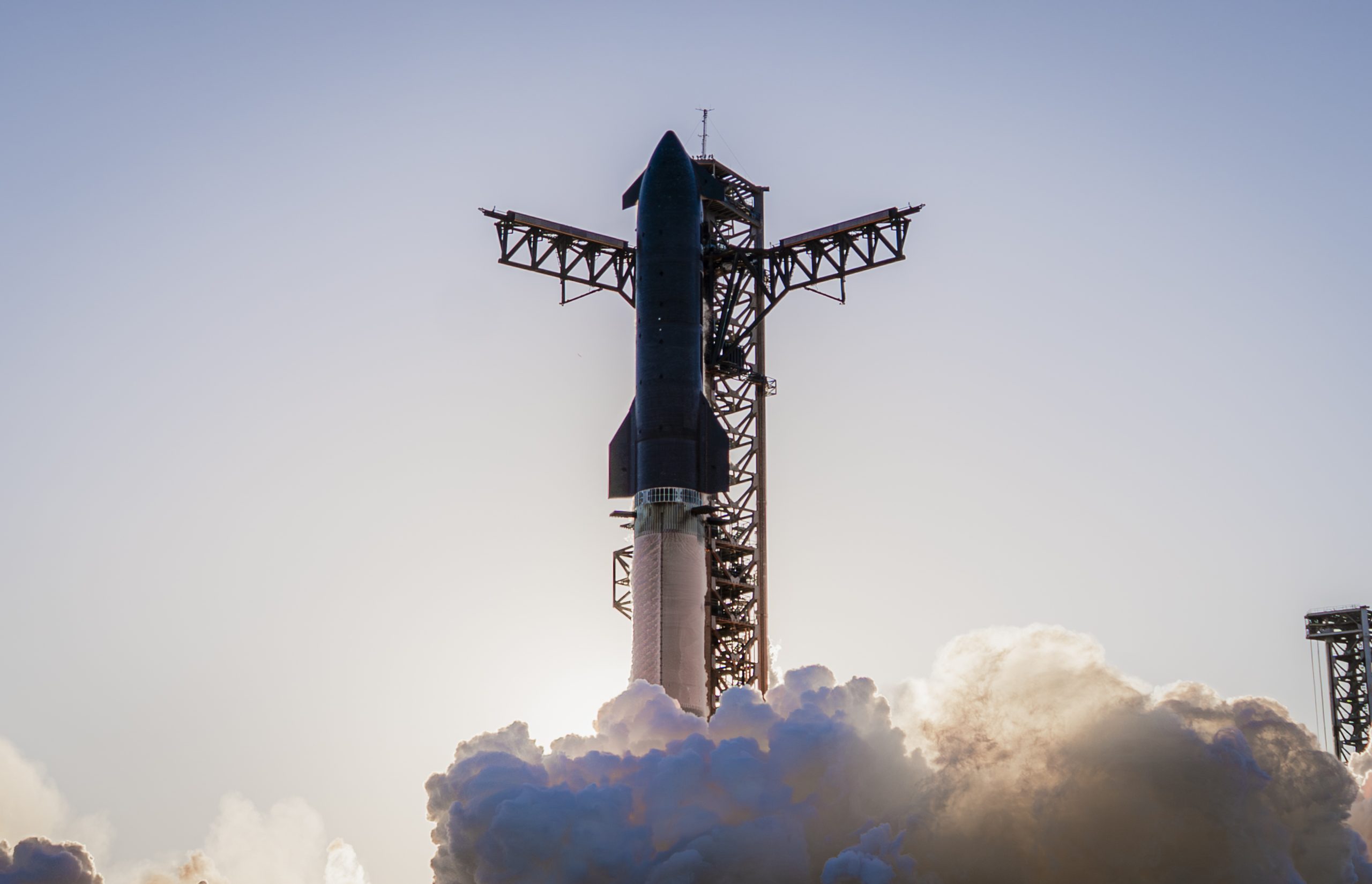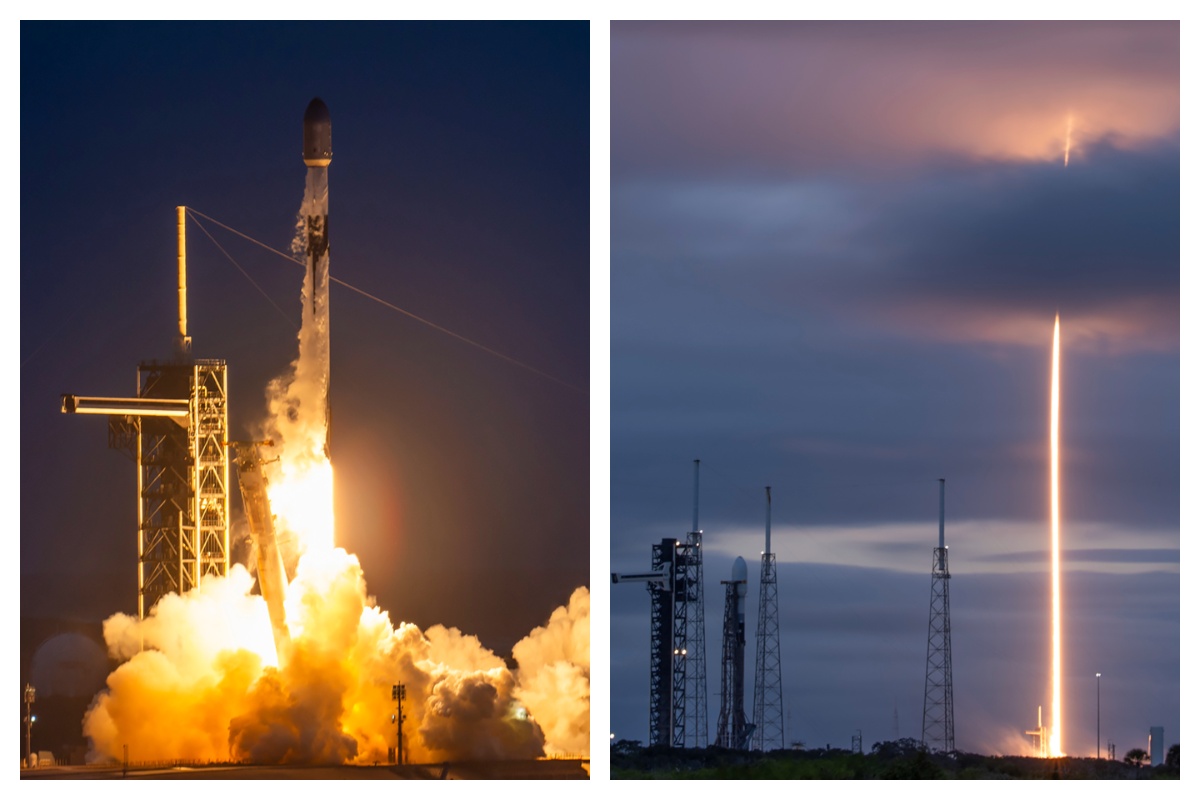

SpaceX
SpaceX & ULA could compete to launch NASA’s Orion spacecraft around the Moon
In barely 48 hours, the future of NASA’s SLS rocket was buffeted relentlessly by a combination of new priorities in the White House’s FY2020 budget request and statements made before Congress by NASA administrator Jim Bridenstine. Contracted by NASA to companies like Boeing, the outright failure of SLS contractors to stem years of launch delays and billions in cost overruns has lead to what can only be described as a possible tipping point, one that could benefit companies like ULA, SpaceX, and Blue Origin.
On March 11th, the White House’s 2020 NASA budget request proposed an aggressive curtail of mission options available for the SLS rocket, preferring instead to save hundreds of millions (and eventually billions) of dollars by prioritizing commercial launch vehicles and indefinitely pausing all upgrade work on SLS. On March 13th, Administrator Bridenstine stated before Congress that he was dead-set on ensuring that NASA sticks to a current 2020 deadline for Orion’s first uncrewed circumlunar voyage (EM-1), even if it required using two commercial rockets (either Falcon Heavy or Delta IV Heavy) to send the spacecraft around the Moon next year. In both cases, it’s safe to say that the political tides have somehow undergone a spectacular 180-degree shift in attitude toward SLS, the first salvo in what is guaranteed to be a major political battle.
“Deferred” upgrades
Of the many potential challenges the ides of March have placed before SLS, the first and potentially most significant involves the rocket’s tentative path to future upgrades over the course of its operation. Those upgrades primarily center around the Exploration Upper Stage (EUS) and a new mobile launcher (ML) platform, as well as a longer-term vision known as SLS Block 2. At least with respect to the EUS, NASA (and politicians) were apparently less and less okay with the extraordinary amount of money and time Boeing suggested it would need to develop the new upper stage, to the extent that cutting (or “deferring”) its development could likely save NASA billions of dollars between now and the distant and unstable completion date. Without the EUS, SLS would be dramatically less useful for extreme deep space exploration, effectively the entire purpose of its existence. Instead, the White House included language that would limit SLS launches to crew transfer missions with the Orion spacecraft and nothing more, cutting out heavy cargo missions for science or station-building. Ultimately, those crew transport launches would probably be more than enough to keep SLS Block 1 and Orion busy.
However, two days later, Administrator Bridenstine stated before Congress that he was dead-set on ensuring that NASA sticks to a current 2020 deadline for Orion’s first uncrewed circumlunar voyage (EM-1), going so far as to suggest that NASA was examining the possibility of launching the ~26 ton (57,000 lb) spacecraft on a commercial rocket, followed by a separate launch of a boost stage to send Orion to the Moon. If this were to occur, the consequences could be far-reaching for SLS, potentially delaying the first crewed launch of Orion on SLS until EM-3 and creating a ready-made, one-to-one replacement for SLS at drastically lower costs. At that point, nothing short of political heroics and aggressive bribery could save the SLS program from outright cancellation.
As it stands, the only rockets capable of conceivably supporting a 2020 launch of the 26-ton Orion are ULA’s Delta IV Heavy and SpaceX’s Falcon Heavy, both of which are certified by NASA for (uncrewed) launches. In fact, Falcon 9 was very recently certified by NASA’s Launch Services Program (LSP) to launch the highest priority NASA payloads, signifying the space agency’s growing confidence in SpaceX’s reliability and mission assurance. While the process of certifying Falcon Heavy for an uncrewed Orion launch would be far more complicated than simply grouping Falcon 9’s readiness with Heavy, it would no doubt help that Falcon Heavy is based on hardware (aside from the center core) almost identical to that found on Falcon 9.


The fact that Bridenstine indicated that the primary goal of these potential changes was to speed up EM-1 – an uncrewed demonstrated of Orion functionally similar to Crew Dragon’s recent DM-1 mission – is also significant, as is the fact that such a commercial SLS stand-in would require two separate launches to complete the mission. One launch would place Orion and its service module (ESM) into Low Earth Orbit (LEO), while a second launch would place a partially or fully-fueled upper stage into orbit to propel Orion on a trajectory that would take it around the Moon and back to Earth, similar to the milestone Apollo 8 mission. The need for two launches and the fact that Orion would be uncrewed means that both SpaceX and ULA would be possible candidates for either or both launches, potentially allowing NASA to exploit a competitive procurement process that could lower costs further still.
If Europa Clipper is anything to go off of, launching Orion EM-1 on a commercial rocket could save NASA and the US taxpayer at least $700M (before any potential development costs), aided further by potential competition between ULA and SpaceX. On the other hand, a system that can launch Orion and support EM-1 could fundamentally support all Orion EM missions, of which many are planned. Whether or not Bridenstine and the White House have considered the ramifications, what that translates into is a direct and pressing threat to the continued existence of SLS, with the White House recommending that the rocket be barred from launching large science missions or space station segments as the NASA administrator proposes making it redundant for Orion launches. As Ars Technica’s Eric Berger rightly notes in the tweet at the top of this article, those are the only three conceivable projects where SLS would have any value at all.
If NASA actually went through with this preliminary plan to launch Orion around the Moon on a commercial rocket, they agency would have also fundamentally created a packaged replacement for SLS with a price tag likely 2-5 times cheaper. If Congress had the option to choose between two offerings with similar end-results where one of the two could save the US hundreds of millions of dollars at minimum, it would be almost impossible to argue for the more expensive solution.
Battle of the Heavies
Despite the potential competitive procurement opportunity for a commercial Orion launch, things could get significantly more complicated depending on the political motivations behind the White House and NASA administrator. While Bridenstine explicitly avoided saying as much, the options available to NASA would be ULA’s Boeing-built Delta IV Heavy (DIVH) rocket and SpaceX’s brand new Falcon Heavy. DIVH holds a present-day advantage with active NASA LSP certification for uncrewed spacecraft launches, something Falcon Heavy has yet to achieve.
Nevertheless, it could be the case that NASA, Bridenstine, and/or the White House have a vested interested in potentially replacing SLS for crewed Orion launches entirely. Either way, it’s incredibly unlikely that NASA would launch SLS for the first time ever with astronauts aboard, a massive risk that would also patently contradict the agency’s posture on Commercial Crew launch safety, which has resulted in one uncrewed demo for both Boeing and SpaceX before either be allowed to launch astronauts. NASA also demanded that SpaceX launch Falcon 9 Block 5 seven times in the same configuration meant to launch crew. If NASA is actually interested in at least preserving the option for future crewed launches using the same commercial arrangement, Falcon Heavy is by far the most plausible option Orion’s first uncrewed launch. NASA and SpaceX are deep into the process of human-rating Falcon 9 for imminent Crew Dragon launches with NASA astronauts aboard, meaning that NASA’s human spaceflight certification engineers are about as intimately familiar with Falcon 9 as they possibly can be.


Given that much of Falcon Heavy has direct heritage to Falcon 9, particularly so for the family’s newest Block 5 variant, SpaceX has a huge leg up over ULA’s Delta IV Heavy if it ever came time to certify either heavy-lift rocket for crewed launches. In a third-party study commissioned by NASA and completed in 2009, The Aerospace Corporation concluded that Delta IV Heavy could be human-rated but would require far-reaching modifications to almost every aspect of the rocket’s hardware and software. Most notably, Aerospace found – in a truly ironic twist of fate – that Boeing would likely need to develop a wholly new upper stage for a human-rated Delta IV Heavy, increasing redundancy by increasing the number of RL-10 engines from two to four. As proposed by Boeing, the Exploration Upper Stage – under threat of deferment due to high cost and slow progress – would also feature four RL-10 engines and much of the same upgrades Boeing would need to develop for EUS. Aside from an entirely new upper stage, ULA would also need to develop and qualify an entirely new variant of the RS-68A engine that powers each DIVH booster. Ultimately, TAC believed it would take “5.5 to 7 years” and major funding to human-rate Delta IV Heavy.
Meanwhile, Falcon Heavy already offers multiple-engine-out capabilities, uses the same M1D and MVac engines – as well as an entire upper stage – that are on a direct path to be human-rated later this year, and two side boosters with minimal changes from Falcon 9’s nearly human-rated booster. NASA would still need to analyze the center core variant and stage separation mechanisms, as well as Falcon Heavy as an integrated and distinct system, but the odds of needing major hardware changes would be far smaller than Delta IV Heavy.

Regardless, it will be truly fascinating to see how this wholly unexpected series of events ultimately plays out as Congress and its several SLS stakeholders begin to analyze the options at hand and (most likely) formulate a battle plan to combat the threats now facing the NASA rocket. According to Administrator Bridenstine, NASA will have come to a final decision on how to proceed with Orion EM-1 as soon as a few weeks from now.
Check out Teslarati’s Marketplace! We offer Tesla accessories, including for the Tesla Cybertruck and Tesla Model 3.

Investor's Corner
SpaceX IPO is coming, CEO Elon Musk confirms
However, it appears Musk is ready for SpaceX to go public, as Ars Technica Senior Space Editor Eric Berger wrote an op-ed that indicated he thought SpaceX would go public soon. Musk replied, basically confirming it.

Elon Musk confirmed through a post on X that a SpaceX initial public offering (IPO) is on the way after hinting at it several times earlier this year.
It also comes one day after Bloomberg reported that SpaceX was aiming for a valuation of $1.5 trillion, adding that it wanted to raise $30 billion.
Musk has been transparent for most of the year that he wanted to try to figure out a way to get Tesla shareholders to invest in SpaceX, giving them access to the stock.
He has also recognized the issues of having a public stock, like litigation exposure, quarterly reporting pressures, and other inconveniences.
However, it appears Musk is ready for SpaceX to go public, as Ars Technica Senior Space Editor Eric Berger wrote an op-ed that indicated he thought SpaceX would go public soon.
Musk replied, basically confirming it:
As usual, Eric is accurate
— Elon Musk (@elonmusk) December 10, 2025
Berger believes the IPO would help support the need for $30 billion or more in capital needed to fund AI integration projects, such as space-based data centers and lunar satellite factories. Musk confirmed recently that SpaceX “will be doing” data centers in orbit.
AI appears to be a “key part” of SpaceX getting to Musk, Berger also wrote. When writing about whether or not Optimus is a viable project and product for the company, he says that none of that matters. Musk thinks it is, and that’s all that matters.
It seems like Musk has certainly mulled something this big for a very long time, and the idea of taking SpaceX public is not just likely; it is necessary for the company to get to Mars.
The details of when SpaceX will finally hit that public status are not known. Many of the reports that came out over the past few days indicate it would happen in 2026, so sooner rather than later.
But there are a lot of things on Musk’s plate early next year, especially with Cybercab production, the potential launch of Unsupervised Full Self-Driving, and the Roadster unveiling, all planned for Q1.
News
SpaceX reportedly mulling IPO, eyeing largest of all time: report
“I do want to try to figure out some way for Tesla shareholders to participate in SpaceX. I’ve been giving a lot of thought to how to give people access to SpaceX stock,” Musk said.

SpaceX is reportedly mulling an initial public offering, eyeing what would be the largest valuation at the time of availability of all time, a new report from Bloomberg said on Tuesday.
It is one of many reports involving one of Elon Musk’s companies and a massive market move, as this is not the first time we have seen reports of an IPO by SpaceX. Musk himself has also dispelled other reports in the past of a similar nature, including an xAI funding round.
SpaceX and Musk have yet to comment on the report. In the past, untrue reports were promptly replied to by the CEO; this has not yet gained any response, which is a good sign in terms of credibility.
However, he said just a few days ago that stories of this nature are inaccurate:
“There has been a lot of press claiming SpaceX is raising money at $800B, which is not accurate. SpaceX has been cash flow positive for many years and does periodic stock buybacks twice a year to provide liquidity for employees and investors. Valuation increments are a function of progress with Starship and Starlink and securing global direct-to-cell spectrum that greatly increases our addressable market. And one other thing that is arguably most significant by far.”
There has been a lot of press claiming @SpaceX is raising money at $800B, which is not accurate.
SpaceX has been cash flow positive for many years and does periodic stock buybacks twice a year to provide liquidity for employees and investors.
Valuation increments are a…
— Elon Musk (@elonmusk) December 6, 2025
Musk has discussed a potential IPO for SpaceX in recent months, as the November 6 shareholder meeting, as he commented on the “downsides” of having a public company, like litigation exposure, quarterly reporting pressures, and other inconveniences.
Nevertheless, Musk has also said he wants there to be a way for Tesla shareholders to get in on the action. At the meeting in early November, he said:
“I do want to try to figure out some way for Tesla shareholders to participate in SpaceX. I’ve been giving a lot of thought to how to give people access to SpaceX stock.”
Additionally, he added:
“Maybe at some point., SpaceX should become a public company despite all the downsides of being public.”
Musk has been historically reluctant to take SpaceX public, at times stating it could become a barrier to colonizing Mars. That does not mean it will not happen.
Bloomberg’s report cites multiple unidentified sources who are familiar with the matter. They indicate to the publication that SpaceX wants to go public in mid-to-late 2026, and it wants to raise $30 billion at a valuation of around $1.5 trillion.
This is not the first time SpaceX has discussed an IPO; we reported on it nine years ago. We hope it is true, as the community has spoken for a long time about having access to SpaceX stock. Legendary investor Ron Baron is one of the lucky few to be a SpaceX investor, and said it, along with Tesla, is a “lifetime investment.”
Tesla bull Ron Baron reveals $100M SpaceX investment, sees 3-5x return on TSLA
The primary driver of SpaceX’s value is Starlink, the company’s satellite internet service. Starlink contributes 60-70 percent of SpaceX’s revenue, meaning it is the primary value engine. Launch services, like Falcon 9 contracts, and the development of Starship, also play supporting roles.
News
SpaceX reaches incredible milestone with Starlink program

SpaceX reached an incredible milestone with its Starlink program with a launch last night, as the 3,000th satellite of the year was launched into low Earth orbit.
On Monday, SpaceX also achieved its 32nd flight with a single Falcon 9 rocket from NASA’s Kennedy Space Center.
The mission was Starlink 6-92, and it utilized the Falcon 9 B1067 for the 32nd time this year, the most-used Falcon booster. The flight delivered SpaceX’s 3000th Starlink satellite of the year, a massive achievement.
There were 29 Starlink satellites launched and deployed into LEO during this particular mission:
Falcon 9 launches 29 @Starlink satellites from Florida pic.twitter.com/utKrXjHzPN
— SpaceX (@SpaceX) December 9, 2025
SpaceX has a current goal of certifying its Falcon boosters for 40 missions apiece, according to Spaceflight Now.
The flight was the 350th orbital launch from the nearby SLC-40, and the 3,000 satellites that have been successfully launched this year continue to contribute to the company’s goal of having 12,000 satellites contributing to global internet coverage.
There are over five million users of Starlink, the latest data shows.
Following the launch and stage separation, the Falcon 9 booster completed its mission with a perfect landing on the ‘Just Read the Instructions’ droneship.
The mission was the 575th overall Falcon 9 launch, highlighting SpaceX’s operational tempo, which continues to be accelerated. The company averages two missions per week, and underscores CEO Elon Musk’s vision of a multi-planetary future, where reliable connectivity is crucial for remote work, education, and emergency response.
As Starlink expands and works toward that elusive and crucial 12,000 satellite goal, missions like 6-92 pave the way for innovations in telecommunications and enable more internet access to people across the globe.
With regulatory approvals in over 100 countries and millions of current subscribers, SpaceX continues to democratize space, proving that reusability is not just feasible, but it’s also revolutionary.








